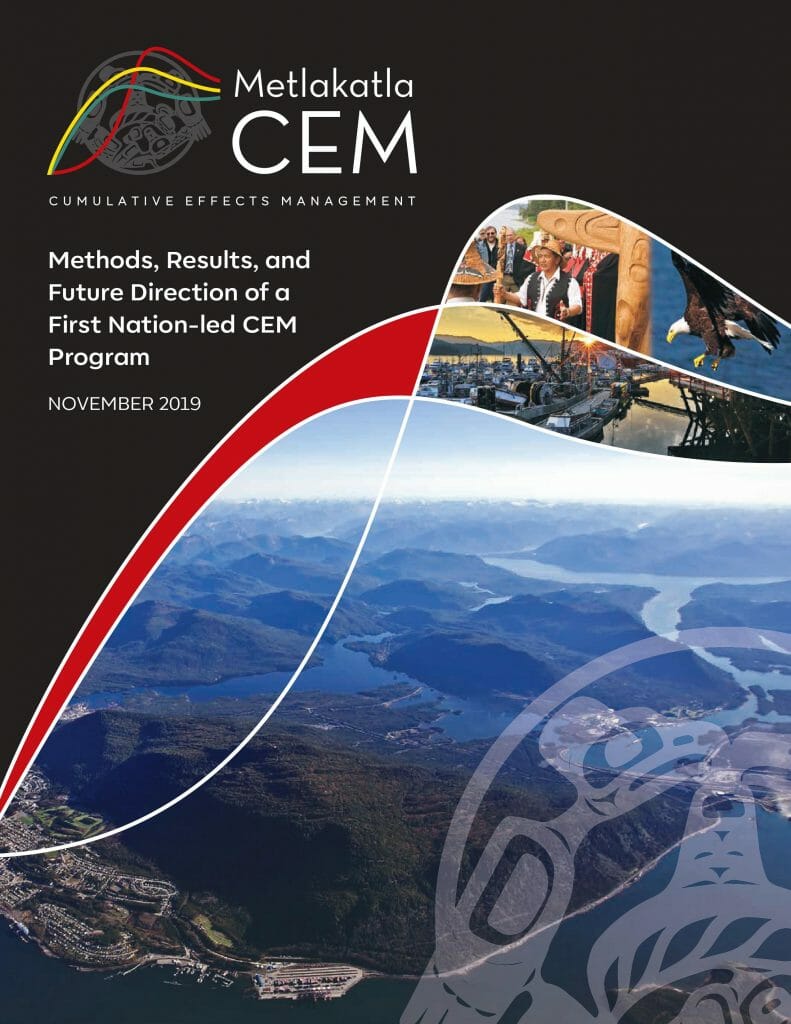Estimated Reading time

2 Mins
Metlakatla Nation Releases New Guide to Assess Impacts of Resource Development in First Nations Communities
A new outreach booklet created by the Metlakatla Nation provides a comprehensive guide to First Nations on how to measure the far-reaching impacts of resource development on their territories.
“In 2014, during the Liquefied Natural Gas gold rush experienced on BC’s North Coast, Metlakatla leadership started asking questions about the full extent of benefits and impacts to its lands and people as a result of major development,” explains Metlakatla Chief Councillor Harold Leighton in the new guide.

In light of this, the Metlakatla Stewardship Society (MSS) assembled a team of staff, consultants, and university researchers to address key questions posed by Metlakatla leadership – namely: “What are the combined impacts of the proposed development on our territory and people? What are we doing to understand and manage those impacts?”
As explained by MSS Executive Director Ross Wilson in a March 27 news release by Coastal First Nations, Metlakatla leadership wanted to use a comprehensive and holistic approach in examining the impacts of resource development on their community. “We weren’t talking about one pipeline and one facility, there were numerous pipelines and facility referrals submitted. […] It was leadership’s directive that established the [Cumulative Effects Management] initiative.”
‘Cumulative effects’ are defined in the guide as “changes to the environment or human well-being from past, present, and future development projects and human activities.” The guide further explains that what eventually grew into the Metlakatla Cumulative Effects Management (CEM) Program has sought to assess and manage the impacts of resource development in their territory by using an “Indigenous Cumulative Effects” approach.
“The Metlakatla CEM Program is a First Nation-led resource management tool uniquely designed to support Metlakatla First Nation decision making and the needs of Metlakatla people,” reads the guide. “Metlakatla values, ethics, and principles are taught by Metlakatla Elders and history, and guide how the CEM Program is developed and conducted.”
The Metlakatla CEM Program is a First Nation-led resource management tool uniquely designed to support Metlakatla First Nation decision making and the needs of Metlakatla people.
Ross Wilson explains that the Metlakatla CEM Program has “helped the Nation gain valuable insight into our planning strategy as we engage with industry and government.” By releasing its new CEM outreach booklet, Metlakatla Nation hopes to share these insights with other First Nations as they navigate similar development proposals in their communities.
As expressed by Chief Leighton: “It was always our intent to share what we learned, and it is our hope that this Synopsis will be of use to other Indigenous groups wanting to undertake cumulative effects management.”
Download the full Metlakatla CEM guide
This story was originally published by Coastal First Nations: Metlakatla First Nation Releases Cumulative Effects Guide
In 2014, Coast Conservation Endowment Fund Foundation approved $111,500 towards the development of the Metlakatla Cumulative Effects Assessment and Management system.
